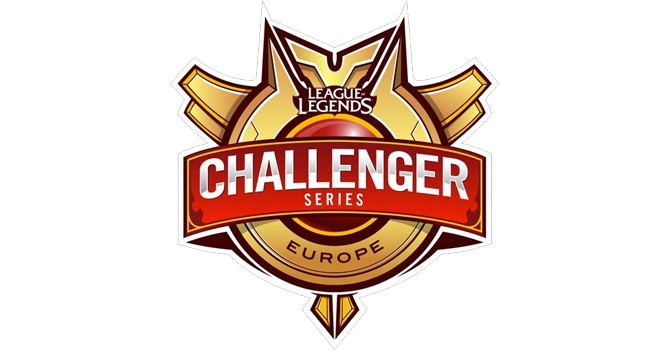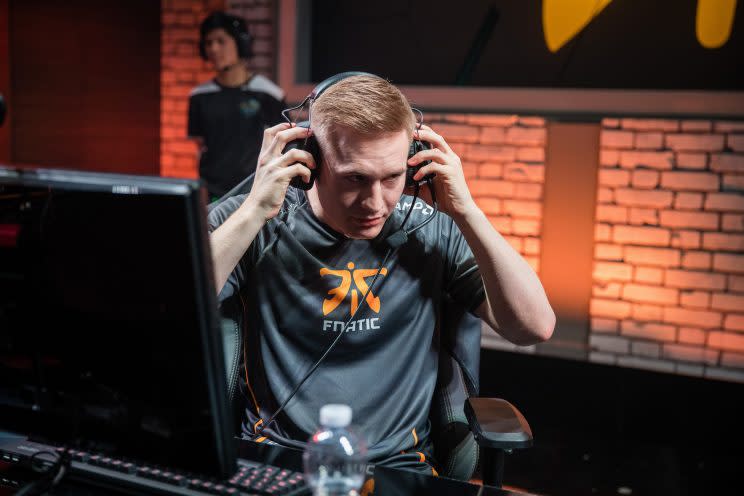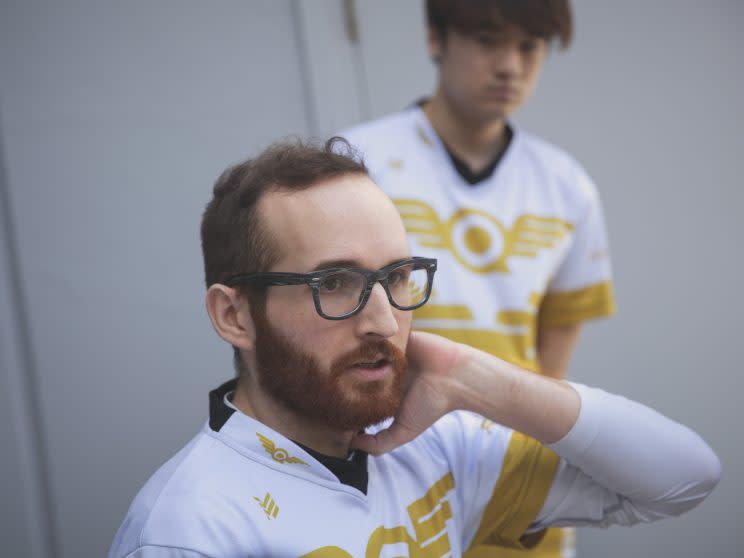The vanishing European sister team: The talent development problem and Summer's new Challenger Series rule

When Origen team owner Enrique “xPeke” Cedeño Martínez revealed the identity of mid laner Yoo “NaeHyun” Naehyun for the 2017 Spring split, one quote in particular struck a chord.
“We ended up looking for European talent here,” xPeke said, “but we couldn’t find anyone who would fit us or would have the characteristics we would want, so we ended up looking at Korean mid laners.”
Having spent the offseason downtime after Worlds watching European National Leagues, I could think of several players worth investing in who might be less risky than a mid laner who finished his sojourn into the League of Legends Secondary Pro League with a 0-17 record. Rumors had circulated that Origen offered European Challenger mid laners an opportunity to join, but many of them rejected the chance.
Even if xPeke’s statement had a grain of falsehood to it, it reflects a deep problem with the perceptions of existing EU LCS team owners: there’s no worthy talent to develop in Europe, or rather, existing EU LCS organizations don’t want the burden of searching for it.
Naturally, part of the reason is a lack of incentive. There’s very little structure in place for organization owners and staff to support young players with no experience. The EU LCS season is extremely high pressure, and it’s hard to gamble on new talent that will require a steep time investment.
Though rookies like Jesper “Zven” Svenningsen and Luka “Perkz” Perkovic and, more recently, Rasmus “Caps” Winther and Barney “Alphari” Morris have debuted in the EU LCS with remarkable results, rough edges are evident. Many organizations still view rising stars as risks compared to stable, known players or the mythos of the Korean solo queue star, which hangs over the scene even after Heo “Huni” Seunghoon’s departure from Fnatic.
At the moment, the arena best suited for developing new players is the European Challenger Series, but Riot Games recently announced that organizations owning LCS teams will no longer be able to own Challenger teams in 2017 Summer. The announcement was brief, and few noticed it before theScore pointed it out in a news post.
“We’re introducing changes to rules around team ownership in two phases this year,” it said. “In Spring Split, ownership of one LCS and one CS team is still permitted, but starting from Summer Split, owning only one team within either LCS or CS will be allowed.”
Currently, this change will impact two LCS organizations that also own CS teams: Fnatic and Misfits. Yahoo Esports contacted both Fnatic Manager Finlay “Quaye” Stewart and Misfits owner Ben Spoont to discuss their motivations for owning a CS spot, despite knowing about the proposed changes well in advance of the announcement.
“We felt the reasoning behind getting into CS in the first place (viable active subs for LCS, scrim partners, developing new talent) outweighed any small profit we could get in the near-term,” Spoont said of his decision to retain the Misfits Academy spot.

Quaye echoed the sentiment.
“There were multiple goals with our Challenger project,” he said. “To have five full time subs that we believe could step up to the LCS team at any point was a large driver for us. I think right now that they have all proven that they are LCS caliber players so we have already been successful in this sense.”
Though other factors, like branding and the eventual payoff if the Challenger team does well, are certainly in play, both Spoont and Quaye chose developing talent as a major motivation for keeping a CS spot.
It’s easy to see why organizations would want to do this. 2014 was arguably the most dominant season of Korean LoL esports, and many have cited the use of sister teams and in-house scrim partners as a reason for their success.
Since then, Korean organizations have continued to sign extremely young players and train them in-house against their main team. Some of the most domestically successful imported Korean players (like Huni and QG’s Kim “Doinb” Taesang) have come from Korean “farm teams.” Before many stars returned to LCK this year, Korean teams have been able to replenish their talent pools at an alarming rate, and some credit this to the talent development infrastructure in place.
Arguably, the most successful League of Legends organizations are best suited to raise talent in this manner. Existing organizations theoretically already know what qualities to develop in new players quickly. They have also signed players who have competed at the highest level and who frequently encounter other talents in ranked games. These players may be able to help organizations identify prospective talents more effectively.
Without the EU Challenger Series as an option, however, the infrastructural support for less wealthy organizations to develop talent diminishes. Some organizations that heavily invest in talent, like EDward Gaming’s new athlete development program, have solid financial backing and are less concerned with return on investment.
Riot Games in Europe have their fair share of reasons for preventing LCS teams from owning Challenger teams, however.
“The Challenger Series’ purpose is to be the competitive layer that separates and creates a funnel between the amateur and pro tier in Europe, EU LCS PO Marc “Riot Snowbird” Schnell, told Yahoo Esports. “The goal is to identify up and coming organizations that can challenge (hence the name) low-performing LCS organizations for their slot and ensure that the top-tier of Europe is represented in the LCS. Recently, CS has also been used as a competition to help develop talent via sister teams of existing LCS organizations. We however don’t believe that CS is well positioned at this time to fulfill both its competitive purpose as well as being a platform to develop new talent.”
Given the history of the Challenger Series in both Europe and North America, it’s easy to see the less romantic side of the talent development narrative. Professing a desire to develop talent, Cloud9 managed to use their Challenger team, comprised entirely of experienced LCS pros, to qualify for LCS and then sell for, reportedly, millions.

Other organizations have used their Challenger Series team to “loan” players to the LCS. Theoretically, this practice suits the organization and the player in question, allowing the organization to promote a promising talent and the player to gain experience. But the overall level of competition declines in this instance.
Most recently, Fnatic promoted Mads “Broxah” Brock-Pedersen from their CS team to the main squad. Fnatic Academy, praised by the main team as potentially the stronger of the two squads, seemed completely different when they competed against Millennium this past Sunday. Millennium, projected to be a lower tier CS team, managed to perfect game one of the previous favorites to top the league, reflecting an overall decline in the competitive level of the team, potentially as a result of the roster change.
The NA office has chosen to allow Challenger Series teams owned by LCS organizations to compete in CS regular season, but not in the Promotion Tournament to LCS. Schnell’s main fear in this case is that this will create “situations in which the worst performing CS teams, or none at all, can qualify for the Promotion Tournament.”
If the top CS teams happen to be owned by LCS orgs, then this will effectively prohibit the best possible teams from competing in the LCS the next split. Instead, teams that will likely be unable to compete against LCS orgs will join the Promotion Tournament.
Though of course this has only happened variably, the best CS teams should be the product of existing experienced LCS infrastructure (or organizations owned by former LCS players). In an ideal world, existing top LCS orgs would be able to raise Challenger Series teams comprised mainly of rookies, then sell them to a competitor without conflict of interest. Given how easy it is to bend the rules, this ideal scenario is very unlikely to happen.
The problem, then, is the lack of alternatives to the Challenger Series if existing organizations genuinely want to develop new players.
“We however fully recognize that the lack of good platforms to develop talent as a whole in our ecosystem at this time,” Schnell said, “which is why we are investing into building a stronger competitive foundation in Europe via Regional Leagues, which have been growing not only in size, but also in competitive relevance, at a strong rate.”
The European Regional (or National) Leagues currently aren’t competitive enough for most LCS organizations to maintain their current projects. Like the LCS proper, National Leagues have an “import” limit; a team competing in the Spanish Liga de Videojuegos Profesional, for example, can only have two players who aren’t of Spanish nationality. As most EU LCS teams tend to be a mix of nationalities, that is just one reason it’s hard to see National Leagues completely replacing Challenger as a talent development tool.
“We may do the regional leagues,” Misfits Owner Spoont said, “depends on the economics and benefits.” He could only confirm that Misfits would assess their options again at the end of Spring.
Quaye was even less enthusiastic. Aside from the talent development benefit, he was realistic about ROI and marketing always being a consideration. National Leagues don’t considerably appeal to Fnatic as they are now.

“Currently sustaining a large roster without the financial support from Challenger and potential large payout of making LCS would be very difficult,” he said. “Without an active semi-pro league to compete in, orgs would just be burning cash with little opportunity to make it back. Most esports teams that are not bank rolled by large investors have a tough time operating in the black. For these teams, the organizational infrastructures are just not there yet without Challenger Series.
“We may consider regional leagues similar to what G2 do with their Spanish line up, but it would not be on a the same level as our current project and therefore less effective.”
Misfits recently announced a partnership with the Miami Heat, which may have influenced Spoont to not completely dismiss the idea of competing in National Leagues. Regardless, it’s clear that, should either org keep their CS team without a CS spot, it would do so at a financial loss and/or within a less competitive setting. Schnell hinted that Riot are looking to provide additional support for National or Regional Leagues in the future, but it’s unlikely that investing in these will be a profitable option by the time the summer season begins.
With more and more teams looking abroad for their talent (often with disastrous results, such as Team Vitality’s recent benching of Ha “Hachani” Seungcha), my fear is that removing an arena for organizations to develop talent will only give them more excuses to avoid it. The European player base is massive, and new organizations aren’t always the best positioned to identify promising players or even know what is required of a competent esports staff.
If organizations like Origen think European talent options are so lacking that a winless Korean import is the best alternative, they owe it to themselves and where they came from to dig a little deeper. I agree that EU CS isn’t in a great position to foster new talent, but that simply reflects an overall need to incentivize existing, experienced organizations to bring up new players.
Any alternative league would have to be well-marketed without the prospect of qualifying for LCS, and the fanbase may not exist for this possibility. In-house scrim teams would pose an undue financial burden on organizations without significant financial backing (attempts to start “Reserve Leagues” in South Korea and China have been largely unsuccessful and unappealing to fans).
Until a viable solution arises, perhaps the best option is for existing LCS organizations to continue to actively scout. A full second team may not be viable, but training one or two substitutes should be encouraged. Organizations at the top of EU LCS shouldn’t feel satisfied simply having the best team in the current generation, but the best talent primed to allow them to stay dominant.
Because one of the biggest things separating the EU LCS from the LCK isn’t the Korean players themselves, but the region’s ability to constantly bring up champions. It’s time to stop borrowing from the Korean farm team system and look for small, sustainable ways to build your own. The loss of EUCS sister teams will just make it harder.
You can follow Kelsey Moser on Twitter @karonmoser.

